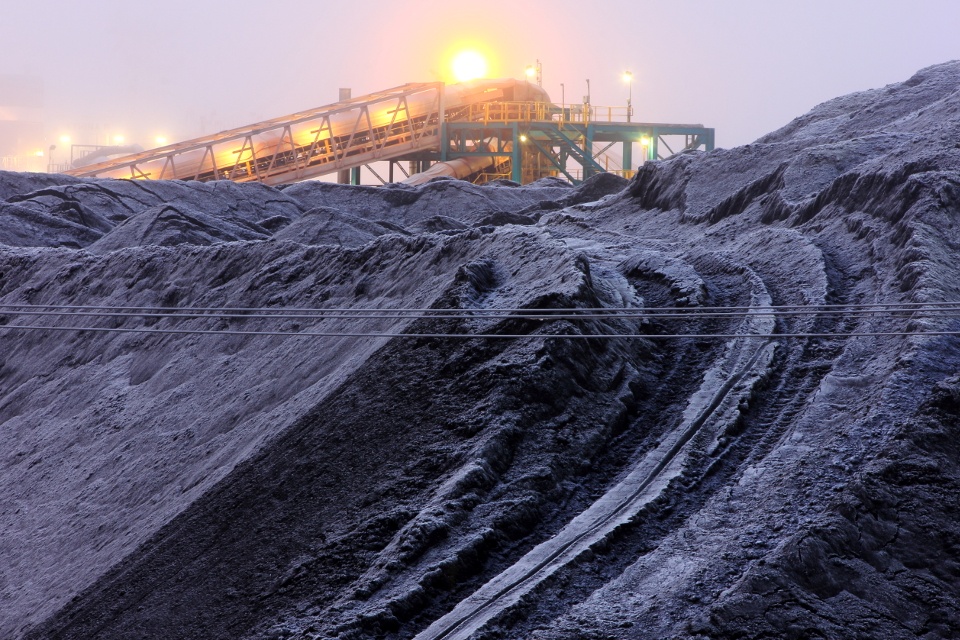Federal rules regarding coal dust were introduced last week, but what does this mean for coal companies? Do the laws only apply to coal mining? How can they be transferred to the transportation of coal? We take a look at how companies can ensure that coal dust is minimized. The new coal dust regulations will mean more demanding compliance procedures for mine operators, stressing the importance of adhering to coal dust safety, both in the mine and out.
New Rules for Coal Dust Control
In April of this year, the Mine Safety and Health Administration (MSHA) issued a set of regulations aimed at coal dust control–a consistent health and safety factor in mining. Based on the Courier Journal report on this new phase of federal rules, which went into effect on August 1, we will examine the necessary adjustments the industry will have to make. The new rules require mine operators to administer more frequent and thorough examinations of dust control systems. Samples are to be taken from each shift, and each measurement has to be recorded. If a sample exceeds the exposure limit of 2 milligrams per cubic meter of air, it is considered a violation by MSHA and requires immediate corrective action. Each mine’s top officer must certify all records. Previously, mine operators were allowed to use samples from five separate shifts, and action was only required if the average of these readings exceeded the exposure limit. Under the new regulations, individual, full-shift samples are measured against the compliance limits, even if that shift surpasses the previous maximum of eight hours. The dust inspectors who conduct measurements must also now gain recertification every three years. More rules are scheduled to be put in place in 2016. At that time, the limit will be reduced to 1.5 milligrams per cubic meter of air, and miners will be required to wear monitors that provide instant readings of dust levels. Joseph Main, head of the federal Mine Safety and Health Administration, says that while his agency’s new rules intend to keep workers safe, the administration has been in constant communication with businesses involved in mine operations to help them prepare for the changes. “We probably have done the most extensive outreach on this rule–working with the stakeholders, the miners and mine operators–than any rule that I know of in modern times. Our objective is to get the message out; it’s not to surprise people.”
Coal Dust Issues from Ground to Road
Currently, the new regulations only target the mining of coal. However, they also highlight the potential health issues caused by coal dust produced by transportation, processing, and storage. Coal companies are facing increasing pressure to ensure safe and healthy working environments at every step in the process. Midwest Industrial Supply provides various solutions for these operations to target coal dust in all forms–including conveyor belt/process dust, mine tailings dust, pile dust, haul road dust, and in-transit dust.
Conveyor Belt/Process Dust
Airborne particles in coal handling facilities can cause respiratory illnesses and other health issues, such as allergic reactions, dust-related headaches, and ocular complications. Excess dust also disrupts equipment and belt systems, increasing maintenance costs. Midwest’s solutions include a range of products that keep process dust under control during loading, unloading, transferring, crushing, and stack-out reclaim processes, ensuring that the plant is in regulatory compliance and eliminates dangerous PM10 and PM2.5 emissions. These solutions include:
- Dust-Buster® Spray Systems
- Dust-Buster® Foam Agents
- Dustract® Wet Suppression System and Agent
- SoKleen® Residual Dust Control Agent
- So-Long® Residual Dust Suppression
Mine Tailings Dust and Coal Pile Dust
In the winter months, mine tailings can freeze-dry, resulting in fugitive PM10 and PM2.5 dust and coal ash escaping from the surface. In the summer months, stormwater can cause content to leach out of surface soils. Midwest’s Soil-Sement Engineered Formula® and Soil-Sement® prevent moisture from permeating tailings and coal piles, reducing leaching, and keeping fines and hazardous matter contained. This, in turn, serves to eliminate erosion and contamination of surrounding water sources. These products will seal mine tailings and ensure effective coal pile management, while also eliminating the threat of metal or airborne particulate matter that can affect employees and others near a site.
Transportation
During the transportation of coal, Midwest’s haul road dust solutions prevent PM10 and PM2.5 emissions, keeping the transportation process in compliance with standard regulations. Products include:
Midwest’s Coal Cartopper is a customized spray that extends over railcars to easily apply Soil-Sement Engineered Formula during transit. It’s a proven dust suppressant that keeps coal from escaping into the air. As mining health and safety regulations become more stringent, you must ensure that your workers are operating in the healthiest and safest environment possible. Midwest’s solutions ensure that all coal dust is contained at all steps of the process, so you know your working environment is always kept safe and clean. For more information on Midwest’s active response to the new federal regulations on coal dust safety, please visit our booth (#509) at the Coal Handling & Storage Conference in St. Louis, running October 20-22.

